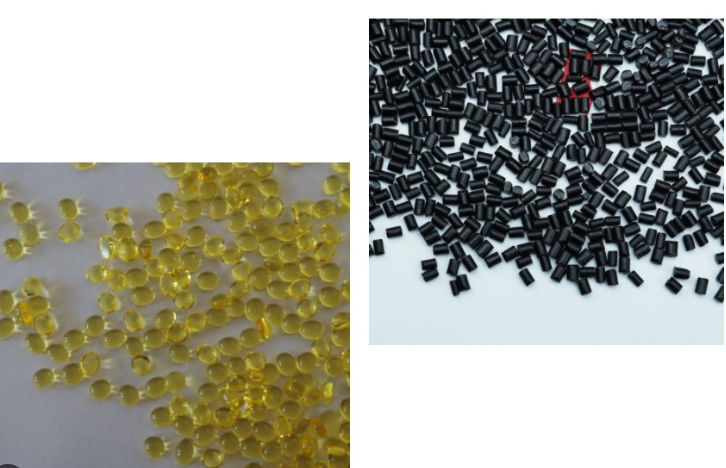Polyamide and nylon are both common man-made synthetic materials. Although the chemical structures of both contain repeating units of imines and carboxylic acids, they still differ significantly in details.

The Definition, Material, Strength, Use, etc. of Polyamide and Nylon
The comparison table between polyamide and nylon is as follows:
| Polyamide | Nylon | |
| Definition | The raw materials of polyamide are mainly propylene glycol and imidazole acetimide, which are synthesized through dehydration and condensation reaction. | The raw materials of nylon are mainly aliphatic dicarboxylic acids and Diamines, such as hexamethylene diamine and imidazole diamine. |
| Material | Linear polymer | Subpolymer |
| Strength | High strength but weak toughness | Low strength but good toughness |
| Main Uses | Clothing, medical materials, engineering plastics, etc. | Fiber, can bags, fishing lines, etc. |
| Polymerization Method | Polyamide forms long-chain polymers by simply adding amide units for chain growth reaction. | Nylon polymerizes through a combination of ring-opening polymerization and non-chain reactions. |
| Polymerization temperature | Polyamides are generally polymerized at relatively high temperatures (200-250°C). | The polymerization temperature of nylon is relatively low, usually between 180-230°C. |
| Processing Process | Polyamide is commonly processed using techniques such as rotation, extrusion, etc. The product can be obtained directly through ordinary forming processing. | Nylon needs to be melt processed and formed through an extruder or infusion. |
How To Identify Polyamide and Nylon?
Polyamide and nylon can be identified by the following methods:
- 1. Thermal test:
Nylon will soften and deform when heated, and then begin to melt when heated further; polyamide will shake and deform after being heated, but will not melt.
- 2. Chemical testing:
– Nylon precipitate and acetic acid can form a soluble mixture, while polyamide and acetic acid are insoluble;
– Nylon and soda ash are easily soluble after soaking, while polyamide and soda ash are insoluble.
- 3. Solvent test:
Nylon can be dissolved in strong alkaline solutions, acetone, benzene, etc.; polyamide can only be dissolved in strong acidic solutions such as dilute hydrogen chloride acid.
- 4. Sound test:
Pull the nylon to make a “zzzz” sound, and pull the polyamide to make a “cri cri” sound.
- 5. Appearance test:
Nylon has a silky luster and a smooth surface; polyamide is viscous and soft to the touch.
- 6. Animal testing:
Nylon is used as food by rats and small squirrels; polyamide is ignored by them.
Practical Examples of Polyamide and Nylon
| Polyamide | Nylon | |
| Clothing | sweaters, T-shirts, underwear, hospital gowns | Stockings, flag Japan, sportswear |
| Medical | waterproof wound causal dressing, gastric tube | Total metabolism compound cannula |
| Transportation | Small Parts and Accessories | Vehicle ropes, tire reinforcement fibers |
| Household | tableware, slippers, plastic wrap | Laundry bag, storage basket, cleaning brush |
| Industrial | Bearings, gears, zippers | Fiber materials, canvas, steel rope |
| Other | Braces, prostheses | Shoes, socks, sportswear, fishing line |
Comparison of chemical properties of polyamide and nylon
| Heat resistance | Acid resistance | Alkali resistance | Solvent resistance | |
| Polyamide | High | Medium | Medium | Medium |
| Nylon | Medium | High | High | High |
Comparison of physical properties of polyamide and nylon
| Density | Refractive Index | Flammability | Moisture Absorption | |
| Polyamide | Medium | Medium | High | High |
| Nylon | Low | High | Medium | Low |
Price comparison of polyamide and nylon
| Raw material costs | Processing cost | Total cost | |
| Polyamide | Medium | high | high |
| Nylon | low | Medium | low |
Best Suppliers of Nylon and Polyamide
The prices of nylon and polyamide products from different suppliers will vary. Here is an overview of the price levels of several major suppliers:
- -DuPont: As the world’s largest nylon supplier, its nylon raw material prices are at a relatively high level in the industry, generally US$2-4 per pound.
- -Solvay: The price of nylon 6,6 is equivalent to DuPont, and the price of polyamide raw materials is slightly lower than DuPont.
- -BASF: The price of raw materials is above average, but it can provide relatively preferential pricing through its scale advantage.
- -Evonik: The price of polyamide raw materials is average, PA6 is about 1-2 US dollars/pound, and PA66 is slightly higher.
- -Dow: The price level of polyamide raw materials is similar to that of Ivory, with a wide range of product categories and many choices.
- -DIC: The price of raw materials for Japanese production is slightly lower, and the price of export products is close to the level of Ivory.
- -Perlon: The price of finished nylon products is higher, but the price advantage of finished polyamide products is obvious.
- -Zhuzhou Gaowei: Domestic raw material pricing is relatively economical, and finished product prices are at the average level of domestic suppliers from China.

